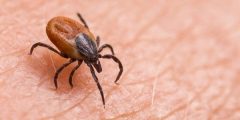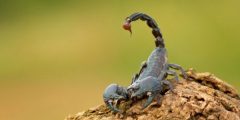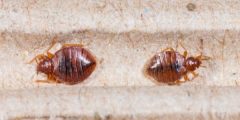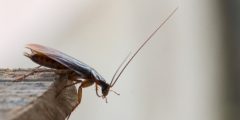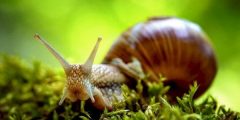Butterfly life cycle
Butterflies are insects belonging to the order Lepidoptera. Butterflies have a life cycle consisting of only four stages, in which they undergo a radical and complete transformation, starting with a small egg that adult butterflies lay on tree leaves, and then into a butterfly with large, colorful wings. bright,.
The process of butterfly transformation is called complete metamorphosis, which means complete transformation and change in shape during the stages of growth, which is why the babies, which are called larvae, differ in shape from the adult butterfly.
They may also usually eat different types of food at each stage. Butterflies can live in adulthood from approximately a week to a year, depending on their species and the surrounding environment. Below are the four stages of the butterfly’s life cycle, which is considered one of the most amazing transformations that occur in nature.
the egg
The first stage of a butterfly's life is a very small egg that may be spherical, oval, or cylindrical in shape, as its external shape depends on the type of butterfly that laid the egg.
This stage begins during the mating period of the butterflies, as the females lay the fertilized eggs. Some of them lay the eggs in the form of groups and clusters on the leaves of the plants, while others scatter them. It is important to know that the leaves of the plants will be used as food for the larvae when they hatch, and after the mother butterfly finishes mating. Laying eggs: It secretes a glue-like substance in order to stick the egg to the plant leaves, as each egg contains a small hole that allows water and air to enter it.
Read also:bread mold
The length of time required for the eggs to hatch depends on the species of butterflies, in addition to the environmental factors surrounding the egg. Some species are very hardy in the winter and require a long period of time to hatch, but in most cases the egg stage for butterflies lasts only several weeks.
grub
The second stage of a butterfly's life is called the caterpillar, or (in English: caterpillar), which is the stage in which the egg hatches and a small, fully developed worm emerges from it. The first thing this small caterpillar does is eat the shell of its egg, which is the first meal it acquires. These include essential nutrients, and then they begin feeding on the leaves of the host plant.
Some larvae have a soft body, some are hairy, some may have colored skin and some have one color. The larvae goes through several stages, as it is very small at first, and then begins to grow rapidly and may reach 100 times its original size.
During this growth, the caterpillar consumes its old skin, and changes its skin 4 to 5 times at this stage. Before completing this stage, the caterpillars begin to search for a safe place and a host plant. Once they find the appropriate place, the caterpillar begins to prepare for the next stage.
cocoon
The third stage of the butterfly's life cycle is known as the cocoon (in English: chrysalis) or the pupa (in English: pupa), which is the stage of complete transformation of the larvae, and is considered one of the most wonderful stages that the butterfly goes through. This stage begins when the larvae reaches its full size, forming a cover that resembles The shell is around itself and is brown or green in colour
Read also:Information about the fly
At this stage, the caterpillar's body undergoes an amazing cellular transformation, and this transformation consumes a lot of energy, as it loses more than half of its original weight, and all its limbs, organs, and tissues change. The time that the butterfly spends inside the cocoon varies greatly depending on its type, as some last a few weeks or A month, and some species may last for two years, and when the time comes the butterfly is ready for the final stage of its life cycle.
Adult butterfly
The fourth and final stage of the life cycle begins when the butterfly emerges from the cocoon. At first, it will be unable to fly because its wings are flaccid, wrinkled, and folded around its body. After a period of rest, the butterfly pumps blood into its wings and grows to reach its full length, once this stage is reached. They begin to fly, and then spend their time searching for a mate to mate, as butterflies seek to reproduce, and then search for suitable leaves to lay their fertilized eggs, and thus the life cycle begins again.
The importance of the butterfly in the ecosystem
Butterflies are beautiful and cheerful insects, and their presence in forest gardens is not just a beautiful addition, but rather they contribute to the prosperity of the ecosystem. The following is the importance of the butterfly to the ecosystem:
- Butterflies help pollinate plants, as they feed on the nectar of flowers, and their bodies collect pollen grains and carry them to other plants.
- The presence of butterflies is an indicator of a healthy environment.
- They are used by ecologists to study habitat loss, fragmentation and climate change, because butterflies are very sensitive to habitat and climate change.
- Butterflies are an important component of the food chain, as they are prey for birds, bats and other animals.
- Butterflies support a range of predators and other parasites.
Read also:Information about silkworms
Abstract of the article
Butterflies have an amazing life cycle, consisting of four stages in which they change and transform radically and completely, and each stage differs from the one before it, starting with a small-sized egg and then a larvae that hatches from the egg and feeds on tree leaves.
After its growth is complete, it forms a cover called a cocoon around itself, and thus begins the penultimate stage of its life cycle. At this stage, the small caterpillar completely transforms into a butterfly with large, attractive wings. Thus, we reach the final stage in which the butterfly emerges and begins the process of reproduction, and its life cycle is repeated from new.


